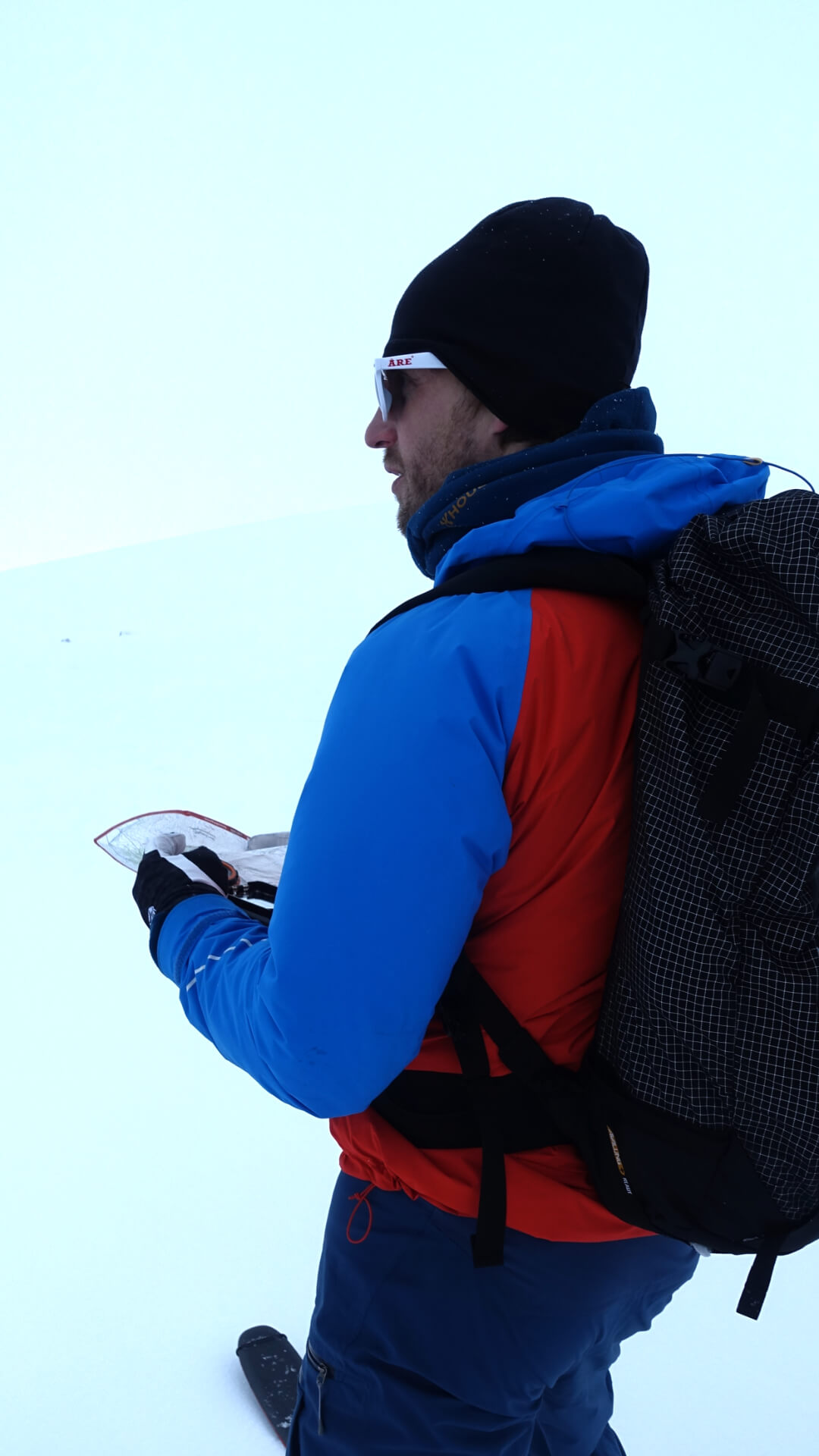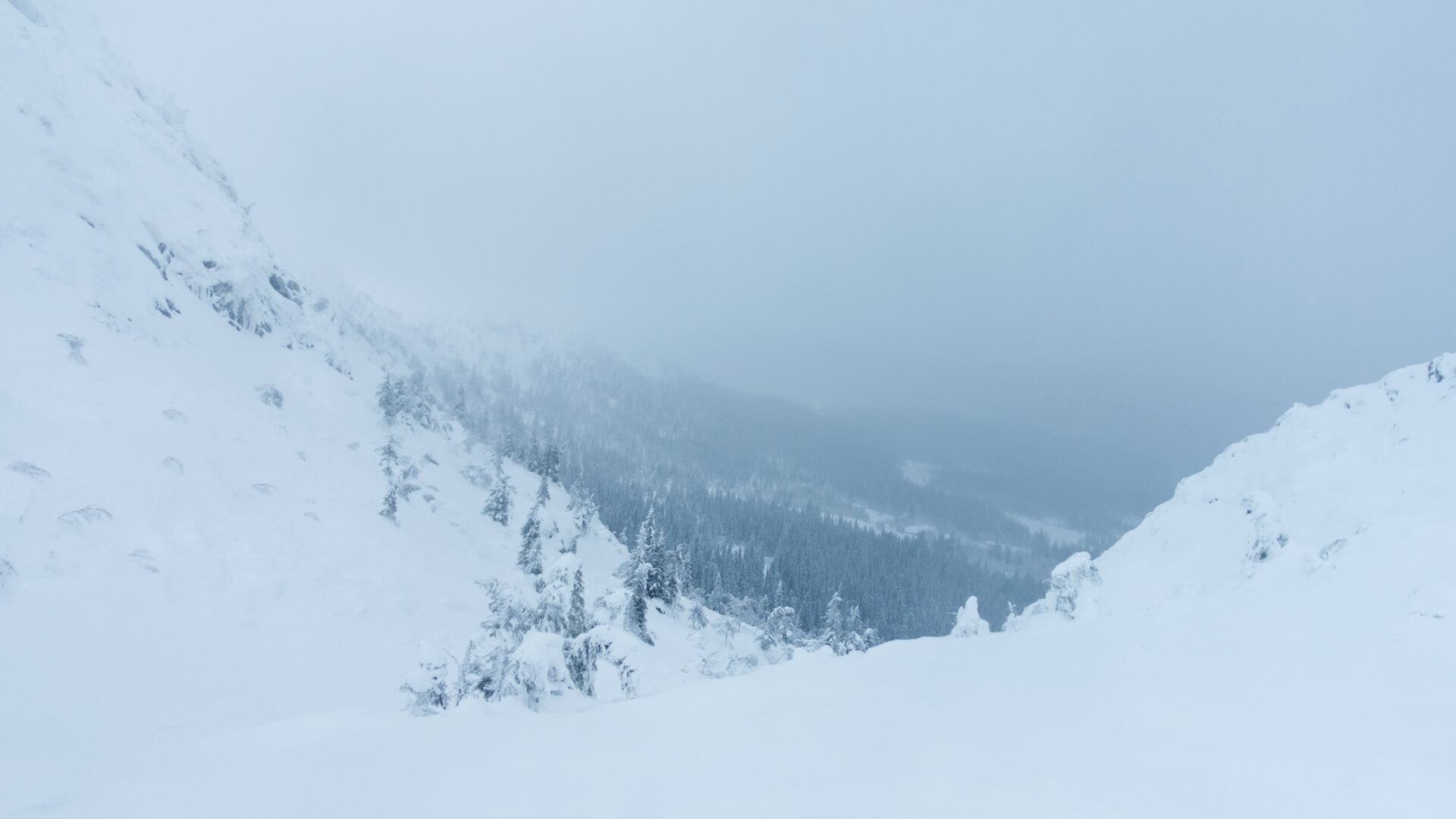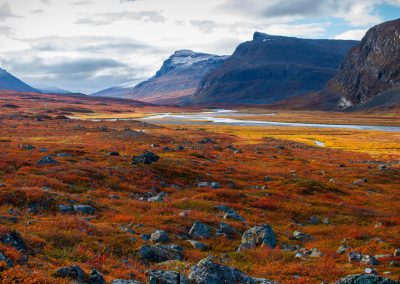Navigation for Backcountry Skiers
Going on a backcountry ski tour not only requires knowledge of how to deal with avalanches, handling your equipment, and different snow conditions. Learning to find your way with high precision promotes safety, enables you to have a greater chance of spotting the powder snow, and means you can get good skiing despite bad weather.
High Precision Ski Touring
Request a quote
Finding your way in the backcountry
All backcountry skiers need to relate to navigation in one way or another. This course is for you who want to create that warm good feeling of being in control of the situation when the storm moves in or just want to be able to maximize the tour without unnecessary missteps. Welcome to learn the black magic also known as micro navigation.
Season
December – May
Difficulty
Intermediate
Why good navigation matters
It is not always sunny and calm on the mountain. It can be harsh conditions out there. But regardless of the weather, there is always a reason to get the navigation right. If you try to go 10% faster and pull off the skins without even clicking out of the binding, well that doesn’t matter much if you are only a few degrees wrong in the direction. Because with the right technique and strategy, you can go out on tours that would otherwise not have been possible.
All of this is pretty obvious when we’re talking about a full blizzard, but it’s also true on warm spring days when it comes to hitting the right slopes before the sun warms them up too much. Or, for that matter, the actual approach through the forest up the mountain – it’s very easy to get lost here, even if it’s only an hour’s detour.
If you think that guidebooks, your phone’s GPS and nice comments on Facebook have the answers to “how long does the tour take”, then you are wrong. On this course, you instead create your own toolbox that allows you to handle different situations and with high precision navigate right on the top tour. Don’t leave the best days of the year to chance!
Why a separate course in backcountry navigation?
For a number of years, we have noticed that this is a knowledge that many backcountry skiers lack. At the same time, you need to spend enough time for the knowledge to stick, but above all to become useful. It is only when you have learned to use several different tools so that you can build it into a system that the navigation skills become useful.
We also know that there are a number of people who are not at all interested in navigation and would rather book a guide. Therefore, we also do not want to force anyone to use a map and compass as mandatory parts of our other courses.
Who is this course in navigation suitable for?
The course is designed for those of you who may do a lot of tours on your own or with friends, without a guide. Or maybe you’re just so geeky in the world of ski touring that you’re constantly looking for new knowledge that can complement other skills in avalanche knowledge and reading terrain.
It may also be that you have your sights set on working in the mountains and want to have the opportunity for more education and extensive training in micro-navigation. Or you have a specific ski touring project in front of you where you realize the value of being able to get to the right places in the most efficient way.
After a night’s sleep, the obligatory ‘look out the window’ and make-your-own weather forecast follows. There behind the curtain far in the distance lurks the peak! /Markus






Whiteout above treeline and difficult-to-navigate forest below.
Preliminary program
Pre-course
Well before the course starts, you get access to the online course. By completing this, you create a good basis for continuing the training days, which become a little more practical.
Here, navigation is discussed in theory in a simple and easy-to-understand way where we build a common vocabulary of navigation terms. Here, an understanding is also created of how to build a system of navigation techniques to reach your goal, which may be a specific ski run or the entrance to a chute.
The online part is also suitable as a reminder for the next season, or for you to be able to continue training on your own.
Day 1
Time to meet for real and test micro-navigation in practice. Here we pick up the ball from the theory and go through whether there are any difficulties and start building small blocks that we will later be able to apply in reality.
We eat lunch outside and in the afternoon we hope to have a nice ski run as a finish.
Depending on how many people participate in the course and the weather, it can take a slightly different amount of time. We aim to start around 10 am in central Åre and finish around 4 pm.
Day 2
On the second day out in the field, we try to be a little more flexible to build on yesterday’s and the group’s knowledge.
Weather, visibility, and snow conditions mean that we have to adapt the plan so that the degree of difficulty offers a suitable challenge.
The hope is to have a nice run today as well, and possibly, we will start a little earlier to finish a little earlier as well.
When you leave the course, our goal is for you to be able to apply basic techniques to pinpoint your position on a topographic mountain map and use navigation techniques to reach your destination.
Included in the price
Instructor with a lot of experience
Safety & Avalanche Equipment
(transceiver, shovel and probe)
Pre course readings
Course materials such as maps, compasses and more.
Checklists and navigational aids to bing back home
Local Transfers to the area of the day
Help with arranging accommodation and transfer from airports
Starting location:
We run the courses in Årefjällen, but since the techniques can be used all over the world, we can also coordinate courses in other places.
Difficulty and Prerequisites:
Has tried ski touring before
Has done some off piste skiing before
Please do not hesitate to ask questions.
Packing list:
A list of what you need to bring can be found here. If you have any questions, please ask.
Good to know:
Please mention if you are allergic to something, have special dietary needs, or take medication for anything on a regular basis when booking. Also make sure your insurance covers this activity and that your equipment is in good condition. Please verify your travel details and flight times before booking travel to/from the trip.





